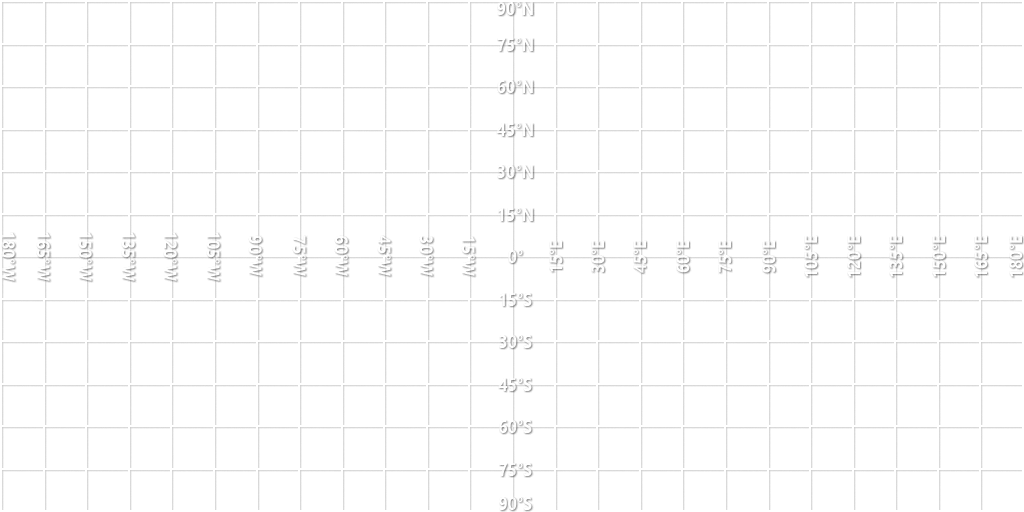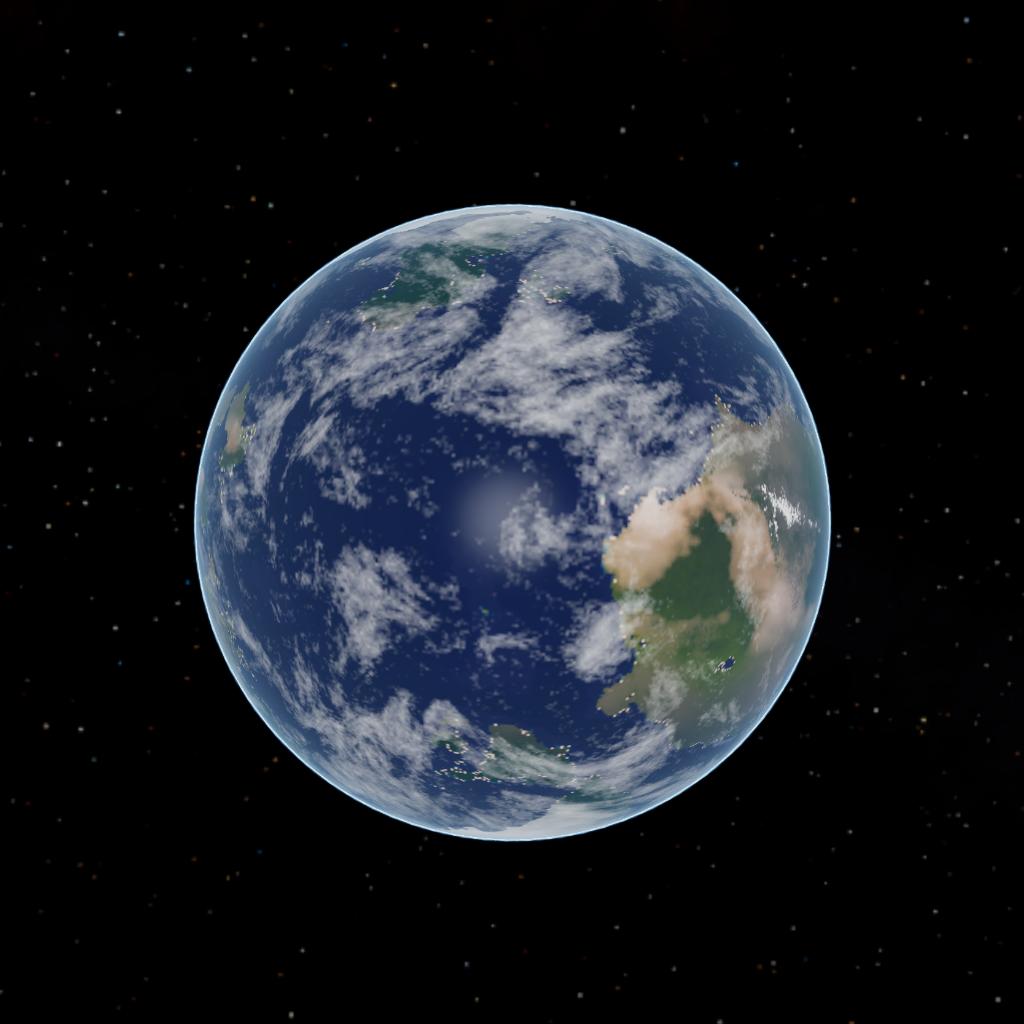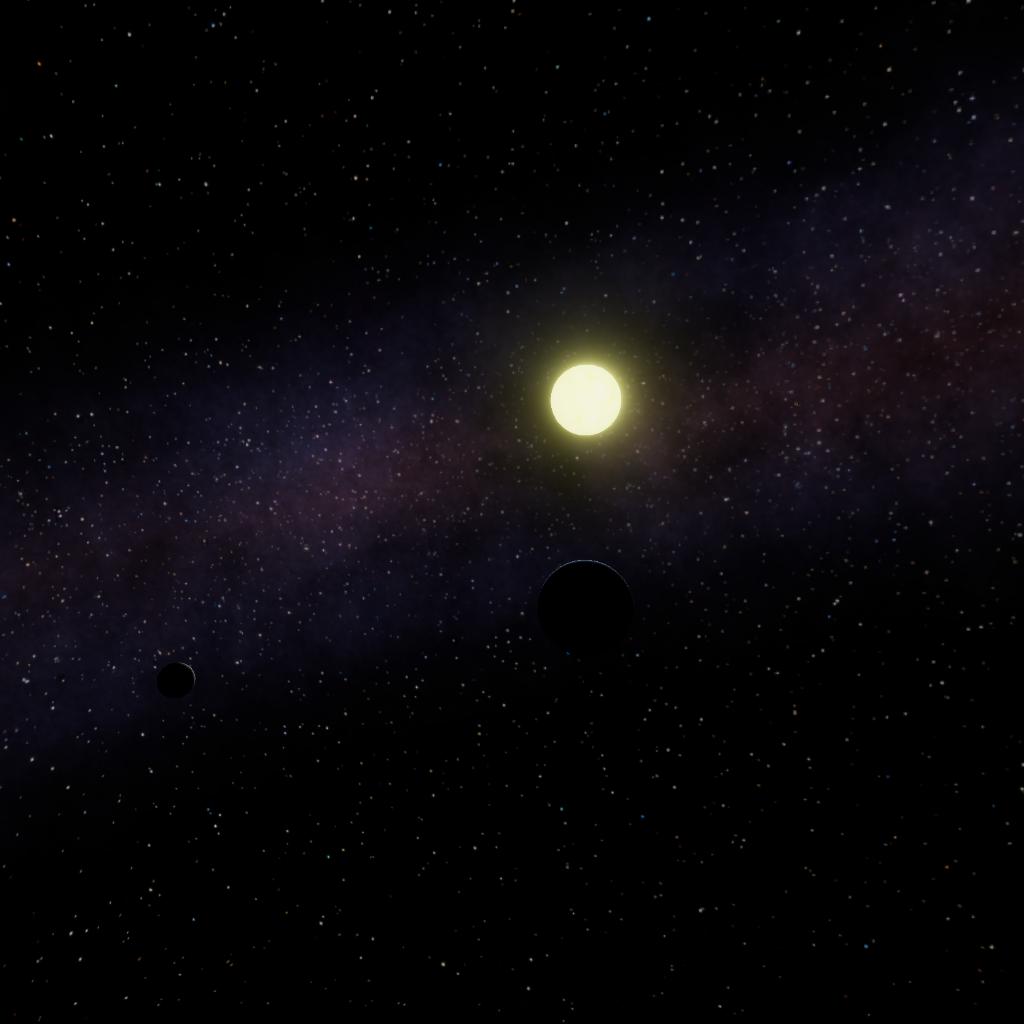Earth is the third planet from the Sun and the only astronomical object known to harbor life. This is enabled by Earth being an ocean world, the only one in the Solar System sustaining liquid surface water. Almost all of Earth's water is contained in its global ocean, covering 70.8% of Earth's crust. The remaining 29.2% of Earth's crust is land, most of which is located in the form of continental landmasses within Earth's land hemisphere. Most of Earth's land is at least somewhat humid and covered by vegetation, while large sheets of ice at Earth's polar deserts retain more water than Earth's groundwater, lakes, rivers, and atmospheric water combined. Earth's crust consists of slowly moving tectonic plates, which interact to produce mountain ranges, volcanoes, and earthquakes. Earth has a liquid outer core that generates a magnetosphere capable of deflecting most of the destructive solar winds and cosmic radiation.
Earth has a dynamic atmosphere, which sustains Earth's surface conditions and protects it from most meteoroids and UV-light at entry. It has a composition of primarily nitrogen and oxygen. Water vapor is widely present in the atmosphere, forming clouds that cover most of the planet. The water vapor acts as a greenhouse gas and, together with other greenhouse gases in the atmosphere, particularly carbon dioxide (CO2), creates the conditions for both liquid surface water and water vapor to persist via the capturing of energy from the Sun's light. This process maintains the current average surface temperature of 14.76 °C (58.57 °F), at which water is liquid under normal atmospheric pressure. Differences in the amount of captured energy between geographic regions (as with the equatorial region receiving more sunlight than the polar regions) drive atmospheric and ocean currents, producing a global climate system with different climate regions, and a range of weather phenomena such as precipitation, allowing components such as nitrogen to cycle.
Earth is rounded into an ellipsoid with a circumference of about 40,000 kilometres (25,000 miles). It is the densest planet in the Solar System. Of the four rocky planets, it is the largest and most massive. Earth is about eight light-minutes away from the Sun and orbits it, taking a year (about 365.25 days) to complete one revolution. Earth rotates around its own axis in slightly less than a day (in about 23 hours and 56 minutes). Earth's axis of rotation is tilted with respect to the perpendicular to its orbital plane around the Sun, producing seasons. Earth is orbited by one permanent natural satellite, the Moon, which orbits Earth at 384,400 km (238,900 mi)—1.28 light seconds—and is roughly a quarter as wide as Earth. The Moon's gravity helps stabilize Earth's axis, causes tides and gradually slows Earth's rotation. Tidal locking has made the Moon always face Earth with the same side.
GENERAL INFO
- Created On: iOS
- Game Version: 1.3.204.1
CHARACTERISTICS
- Radius: 6,371 km
- Sea Level: 0 m
- Surface Gravity: 9.8 m/s
- Rotational Period: 14h
- Escape Velocity: 11.17 km/s
- Mass: 5.96E+24kg
Atmosphere
- Height: 59 km
- Scale Height: 8,485 m
- Surface Air Density: 1.200 kg/m3
- Surface Temperature: 280 K
EQUIRECTANGULAR MAP

3 Comments
- Log in to leave a comment
-
-
23.2k Aludra877+2 7 months ago
Love the indepth lore and stats, your images are good, however if you want to create replica's, maybe you could learn how to use maps and the map editor, I reccomend someone like @SolarCompany for tips about that other than that, great work here, You did Terra well




@RedeemedSPer What?